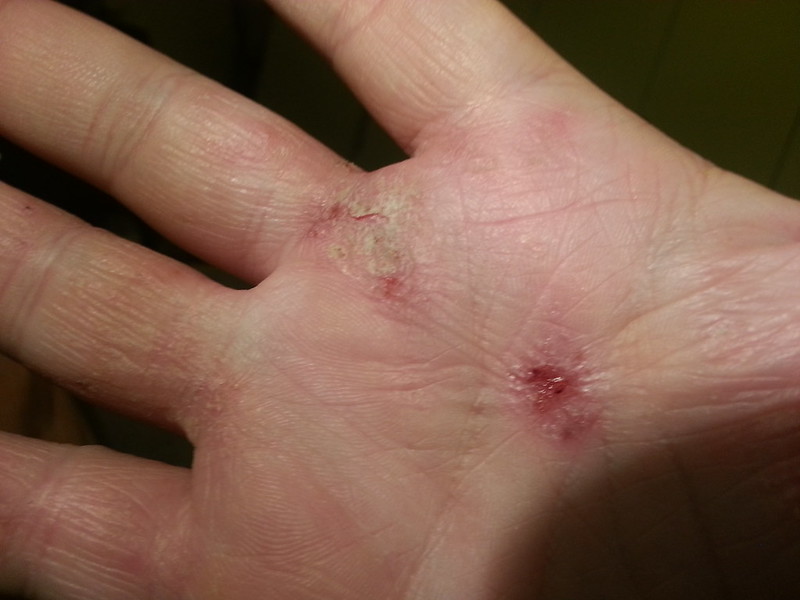
Atopic dermatitis can be difficult for some patients to manage with topical drugs alone. Such cases now have a new FDA-approved treatment option, a biologic drug from LEO Pharma that tackles the chronic inflammatory skin disorder from within the body.
The FDA on Tuesday approved LEO drug tralokinumab, the latest in a string of regulatory approvals for the drug this year as a treatment for moderate-to-severe atopic dermatitis, also known as eczema. Ballerup, Denmark-based LEO will market its new drug in the U.S. under the trade name “Adbry.”
LEO’s drug is an antibody designed to bind to and block interleukin-13 (IL-13), a signaling protein called a cytokine that plays a key role in driving atopic dermatitis. Adbry is the first biologic drug approved by the FDA that addresses this disease target. In securing FDA approval, LEO will reach the U.S. market ahead of Eli Lilly, which is pursuing IL-13 with lebrikizumab, an antibody it added via a $1.1 billion acquisition of Dermira last year. Last week, the Indianapolis-based pharmaceutical giant reported data from a third Phase 3 study showing its drug met all primary and secondary goals. Based on those results, the company said it plans to seek regulatory approvals throughout the world in 2023.
The FDA’s Adbry approval is based on the results from three Phase 3 studies enrolling nearly 2,000 adults. In preliminary results, LEO had reported that the drug achieved primary and secondary goals measured by tests used to assess the severity of the skin disorder.
The LEO drug is given by subcutaneous injection starting with a 600 mg dose followed by a 300 mg dose injection every other week. Side effects reported from clinical trials include upper respiratory tract infections, eye problems such as conjunctivitis, injection site reactions, and eosinophilia, which is a higher than normal count of a type of white blood cell called an eosinophil. A 300 mg dose given monthly may be considered for patients weighing less than 100 kg (about 220 pounds) who achieve clear or almost clear skin after 16 weeks of treatment.

A Deep-dive Into Specialty Pharma
A specialty drug is a class of prescription medications used to treat complex, chronic or rare medical conditions. Although this classification was originally intended to define the treatment of rare, also termed “orphan” diseases, affecting fewer than 200,000 people in the US, more recently, specialty drugs have emerged as the cornerstone of treatment for chronic and complex diseases such as cancer, autoimmune conditions, diabetes, hepatitis C, and HIV/AIDS.
IL-13 is one of several cytokines associated with atopic dermatitis. Partners Sanofi and Regeneron currently market the blockbuster drug Dupixent, an antibody designed to block IL-4 along with the IL-13 signaling pathway, both of which support the immune response that develops in atopic dermatitis. Since its 2017 approval in atopic dermatitis, the drug has racked up additional nods in asthma, and the partners are developing the drug for other indications as well. In financial results for the third quarter of this year, Sanofi reported that Dupixent accounted for more than $1.4 billion in revenue, a 55% increase compared to the same period last year.
Others in pursuit of new biologic drugs for atopic dermatitis include Amgen, which earlier this year began an alliance with Kyowa Kirin focused on developing the Japan-based company’s mid-stage drug candidate, KHK4083. That antibody treats the inflammatory responses associated with atopic dermatitis by blocking OX40, a co-stimulatory receptor on activated T cells.
LEO added tralokinumab to its pipeline through a 2016 deal with AstraZeneca. The pharma giant received $115 million up front for global rights to the molecule in skin diseases. AstraZeneca kept rights to the drug for other indications outside of skin diseases, including a then ongoing program in asthma. However, AstraZeneca reported in 2017 that the drug failed Phase 3 testing in severe, uncontrolled asthma. AstraZeneca will still make money from the drug. Under the agreement with LEO, it is eligible to receive up to $1 billion in payments tied to commercial milestones, plus royalties from the Danish company’s sales of the drug.
Tralokinumab is already commercialized under the name Adtralza in the European Union, Great Britain, Canada, and the United Arab Emirates. LEO said it expects its new drug will become available in the U.S. in February.
“As our first biologic in the U.S., Adbry signifies important progress in our mission of advancing the standard of care in medical dermatology,” Anders Kronborg, LEO’s chief financial officer acting CEO said in a prepared statement.
Photo by Flickr user Oregon State University via a Creative Commons license













